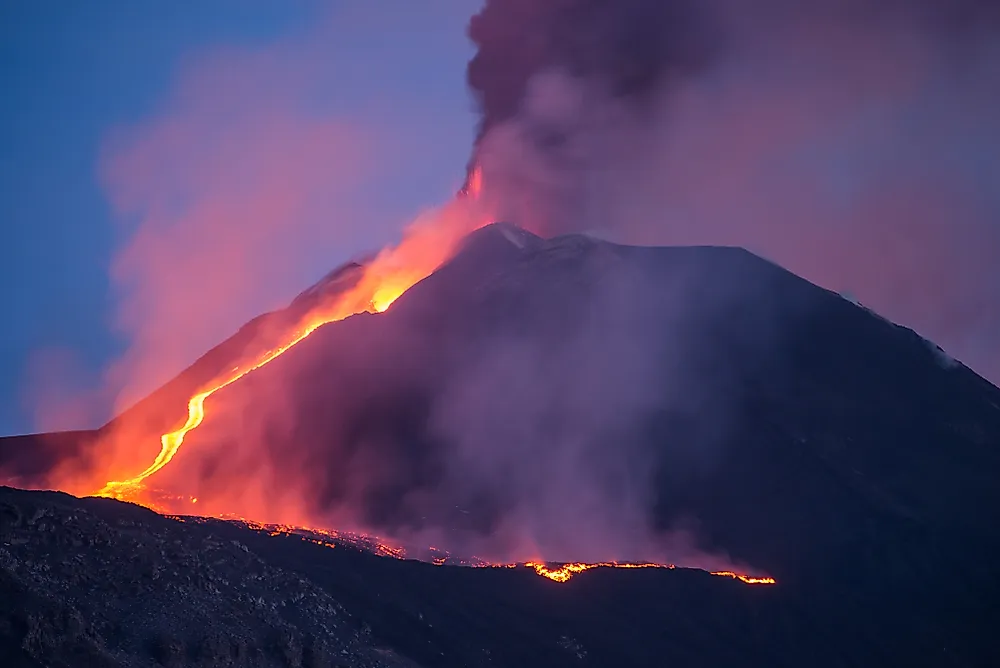The Different Types Of Geological Disasters

A geological disaster happens when natural geological forces cause wanton death and destruction in an area. Such disasters can be triggered by a single major event or phenomenon or a combination of two or more natural or man-made forces acting together to result in such a disaster. Here is a list of the different forms of natural geological disasters that can occur.
Landslide
A landslide is a type of geological natural disaster that includes mass wasting events like rockfalls, debris flows, mudflows, slope failures, and more. Although landslides are more common in mountainous and hilly areas, they also occur underwater and in coastal as well as onshore regions. A combination of many factors or a single factor can trigger a landslide. Such disasters are often caused due to earthquakes, volcanic eruptions or heavy rainfall. Several pre-conditional factors like groundwater pressure, deforestation, erosion, etc., might make the soil surface prone to failure. Deadly landslides like the 2010 Uganda landslide claimed the lives of many people and animals and cause wanton destruction of property.
Avalanche
An avalanche is a deadly natural disaster where masses of snow move down the slopes of a mountain or a hill and bury everything that comes in its path. Avalanches might be triggered by various forces like heavy snowfall, melting of snow due to solar radiation, earthquakes, rain, rockfall, etc. This type of disaster might also be caused by snowmobiles, skiers, or other artificial causes. Avalanches are typically caused in areas where a cohesive snow slab lies on a weaker layer of snow. In such conditions, a small trigger is enough to dismantle the top layer and cause it to slide down the slope under the gravitational force. Avalanches in the Alps killed about 40,000 to 80,000 soldiers during the First World War.
Earthquake
Earthquakes are another type of geological disaster. Such natural events of mass destruction are caused by a sudden energy release in the ground that gives rise to seismic waves. Shaking, vibration, and occasionally ground displacement are the common signs of an earthquake. The point of origin of an earthquake below the surface of the Earth is called the seismic focus while the point located at the surface is called the epicenter. Earthquakes often generate deadly landslides, avalanches, tsunamis or other such events that cause massive death and destruction. The 2017 Chiapas earthquake was one of the deadliest earthquakes in recent times and claimed the lives of nearly 100 people.
Sinkhole
A sinkhole results when a hole or depression is formed on the ground due to the collapse of the surface layer of soil. Such holes are most common in karst landscapes. Here, water seeping underground often erodes the underlying limestone bedrock. Thus, with the chemical dissolution of the underlying layer, the surface layer of rock collapses leaving gaping holes on the surface. Sinkholes are not just formed in karst landscapes. It can also result from human activities. For example, when unsustainable mining renders the ground too weak to support structures on the surface, the ground caves in to produce a sinkhole. The sudden formation of sinkholes can be extremely deadly. For example, 15 people were reportedly killed during the 2010 Guatemala City sinkhole disaster. This event was triggered by heavy rainfall and infrastructural failure to manage such rainfall.
Volcanic Eruptions
Volcanic eruptions are one of the deadliest forms of geological natural disaster. Such events can cause wanton death and destruction in several ways. First of all, the eruption itself may cause damage due to falling rocks and the exploding debris. Secondly, lava flow on the surface of the earth will kill every life form in its path. Volcanic ash released into the atmosphere when mixed with water might form a concrete-like substance that can damage roofs of buildings. Pyroclastic flows from the eruption site are the biggest killer during such a disaster. The 1985 Armero tragedy was one of the worst volcanic eruptions ever caused and it killed nearly 23,000 people in the town of Armero in Columbia.











